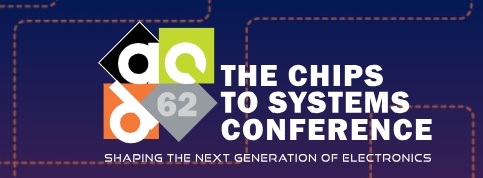Key Takeaways
- Verific Design Automation is collaborating with startups using AI technology to enhance chip design efficiency.
- Silimate, a notable EDA startup, is developing a chat-based GenAI co-pilot for chip and IP designers.
- AI is expected to address previously unsolvable issues in chip design, particularly in the gray areas of design flow.

Rick Carlson, Verific Design Automation’s Vice President of Sales, is an EDA trends spotter. I was reminded of his prescience when he recently called to catch up and talk about Verific’s role as provider of front-end platforms powering an emerging EDA market.
Verific, he said, is joining forces with a group of well-funded startups using AI technology to eliminate error-prone repetitive tasks for efficient and more productive chip design. “We’re in a new space where no one is sure of the outcome or the impact that AI is going to have on chip design. We know there are going to be some significant improvements in productivity. It’s going to be an amazing foundation.”
I was intrigued and wanted to learn more. Rick set up a call for us to talk with Ann Wu, CEO of startup Silimate, an engaging and articulate spokesperson for this new market. Silimate, one of the first companies to market, is developing a co-pilot (chat-based GenAI) for chip and IP designers to help them find and fix functional and PPA issues. Impressively, it is the first EDA startup to get funding from Y Combinator, a tech startup accelerator. Silimate is also a Verific customer.
Ann was formerly a hardware designer at Apple, a departure from the traditional EDA developer profile. Like Ann, other founders of many of the new breed of EDA startups were formerly designers from Arm, NVIDIA, SpaceX, Stanford and Synopsys.
While doing a startup was always part of her game plan, Ann’s motivation for becoming an entrepreneur came from frustrations within the chip design flow and availability of new technology to solve some of these pressing issues.
AI, Ann acknowledged, may provide a solution to some of the problems she encountered and the reason behind the excitement and appetite about AI for EDA applications. “Traditional EDA solutions solve isolated problems through heuristic algorithms. There’s a high volume of gray area in between these well-defined boxes of inputs and outputs that had previously been unsolvable. Now with AI, there is finally a way to sift through and glean patterns, insights and actions from these gray areas.”
We turn to the benefits of EDA using AI technology. “Having been in the industry as long as I have,” says Rick. “I know the challenges are daunting, especially when you consider that our customers want to avoid as much risk as possible. They want to improve the speed to get chips out, but they are all about de-risking everything.”
I ask Ann if adding AI is only a productivity gain. “Productivity as a keyword is not compelling.” It’s an indirect measure of the true ROI, she notes, and adds it’s ultimately reducing the time to tape out while achieving the target feature set that engineering directors and managers look for.”
“What we are doing has been time-tested,” answered Rick when asked why these startups are going to Verific. “We recently had a random phone call from a researcher at IBM. He already knew that IBM was using Verific in chip design. He said, “I know that we need to deal with language and Verific is the gold standard.’
“We’re lucky we’ve just been around long enough. Nobody else in their right mind would want to do what we’ve done because it’s painstaking. I wouldn’t say boring, but it’s not as much fun as what Ann is doing, that’s for sure.”
As we move on to talk about funding and opportunities, Rick jumps in. “When people look at an industry, they want to know the leaders and immediately jump to the discussion of revenue and maturity. EDA is a mature industry and a three- or four-horse race. I think there are more horses at the starting line today that have the potential to make a dramatic impact.
“We’ve got an incredible amount of funds we can throw at this, assuming that we can achieve what we want to achieve. This is not something that just came along. This is a seismic shift in the commitment to use all the talent, tools, technology and money to make this happen.
“To me, it’s not a three-horse race—maybe it’s a 10-horse race. We really won’t know until we look back in another six months or a year from now at what that translates to. I am betting on it because the people doing this for the most part are not professional CAD developers. They looked at the problem and think they can make a dent.”
Notes:
Verific will exhibit at the 62 Design Automation Conference (DAC) in Booth #1316 at the Moscone Center in San Francisco from June 23–25.
Silimate’s Akash Levy, Founder and CTO, will participate in a panel titled “AI-Enabled EDA for Chip Design” at 10:30am PT Tuesday, June 24, during DAC.
Also Read:
Breker Verification Systems at the 2025 Design Automation Conference
Share this post via:






Jensen Huang Drops Donald Trump Truth Bomb on Joe Rogan Podcast